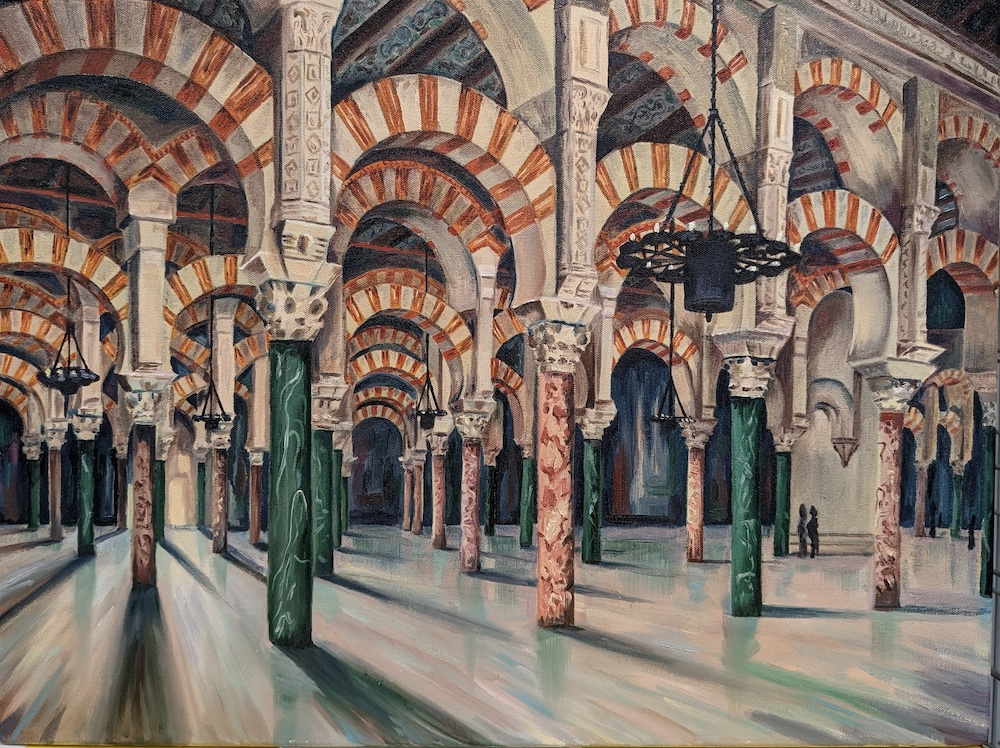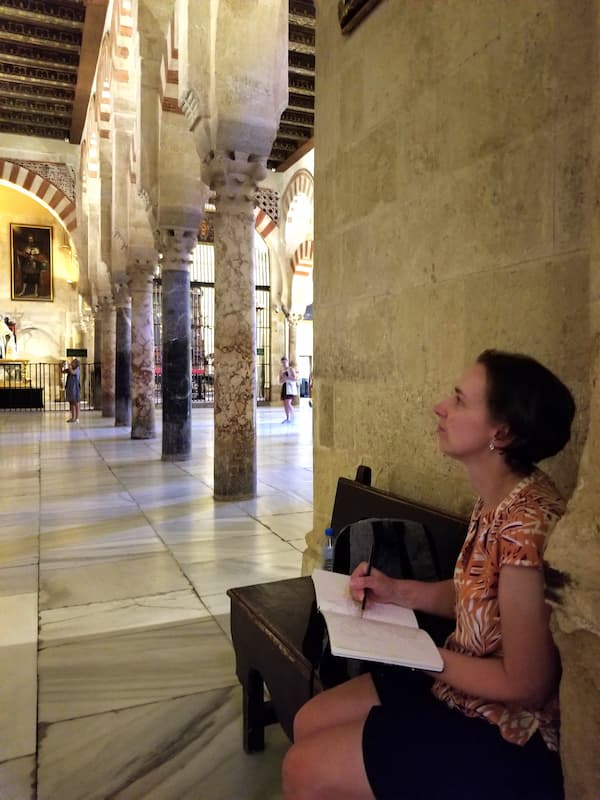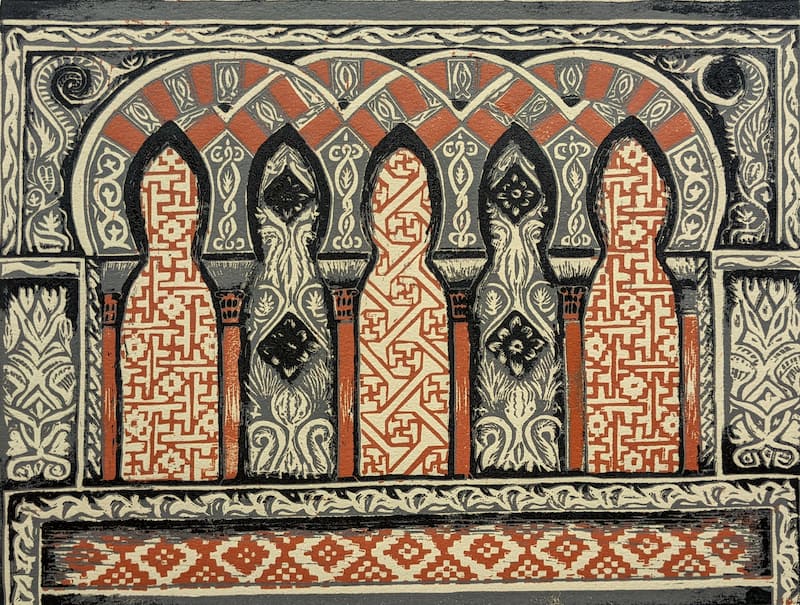Artist and Art Historian: Professor Joanne Allen’s Solo Exhibition Opens


Although Professor Joanne Allen’s students know her as a Medieval and Renaissance specialist in the AU Art History Program, they may not know that she’s also an accomplished artist. Allen’s solo exhibition Infinite Geometries: Exploring the Arts of the Medieval Islamic World is on view now through March 1 in the Katzen Arts Center rotunda.
In this first exhibition of her work, Allen presents drawings, oil and watercolor paintings, intaglio and relief prints, and fabrics based on the art history of the medieval Islamic world, in particular the Great Mosque of Córdoba in Spain. We spoke with Allen about the exhibition, her background as an art historian, and her artistic practice.
A reception will be held on February 16, 5:30-7 p.m. Learn more about the exhibition and explore it virtually.
What is your background as an artist and art historian?
JA: I’ve always been interested in art. I’ve produced art since I was a child and had an intellectual interest in it as well. I chose to study art history and focus on the Medieval and Renaissance eras. With my research, I do a lot of traveling, and I always bring my sketchbook with me. I’ve found that it helps my aesthetic eye to sketch historical artworks and buildings. Having this practice of drawing helps me understand art and architecture.

Where did you receive your training as an artist?
JA: I moved from England to the US in 2012, and since then I’ve really accelerated my art. I became involved with local organizations including the Torpedo Factory and The Art League, where I took printmaking, and Scripts n’ Scribes, which teaches courses on Islamic art, design, and calligraphy. They sometimes partner with the Smithsonian, and I took a calligraphy class with them in conjunction with an exhibition on the Art of the Quran at the Asian Art Museum. They bring in guest instructors from around the world, including from Istanbul, Spain, and London, which has expanded my knowledge of contemporary Islamic art.
Your exhibition includes a variety of media. How do you choose which one to use for each piece?
JA: I have a vision for how a print could end up—whether it’s relief or intaglio, because those are made through different processes. Each lends itself to a different aesthetic. For relief, I cut away the non-printed areas, and leave only what is raised to make the print. Intaglio is incising right into the plate, so there’s a lot more precision to it, a lot of fine lines that are better for representing architecture. With watercolor, there’s a wide range of colors that we don’t have in printmaking. I can add minute details more easily in watercolor than in printing. The design tells me what medium it’s best suited to.
How did you decide to focus on Islamic art?
JA: Initially, I started engaging with Islamic art by going to museums and sketching their collections. I was always drawn to those intricate geometrical patterns. Despite the difficult designs, I continued to push and challenge myself. Now, I can do it freehand—it’s an intellectual and visual challenge. Alongside that, I’m really interested in the social history of Islamic art, especially in Sicily and Spain.
The Great Mosque of Córdoba in Spain appears frequently as a subject in the exhibition.
JA: Yes. I’d always wanted to visit, and eventually I went by myself for a weekend and sketched the whole time. It surpassed all my wildest dreams to see that building. I teach about Córdoba, which has been a cathedral and a mosque at various times, in my Complex Problems class “Depicting the Divine.” That was another motivation for going, to be able to really explain it to my students. Since the 9th century, it’s had six major extensions or renovations— four in the Islamic era and two in the Christian era. It’s such a complex building with a complicated history.

How do you think about Islamic art history when you create your art?
JA: I see calligraphic, geometric, and biomorphic designs working in tandem with one another. Especially how geometric designs developed so differently across regions—so mathematical, so precise, so intricate. I wonder at the spiritual component of creation for people who made these designs long ago. They speak to me of the wonders of God, the interconnectedness of the universe, and the infinite. Personally, I feel a sense of calm as I produce patterns, for example, filling in each tile. That repetition has a calming effect on me.
All artwork images courtesy of the artist.
